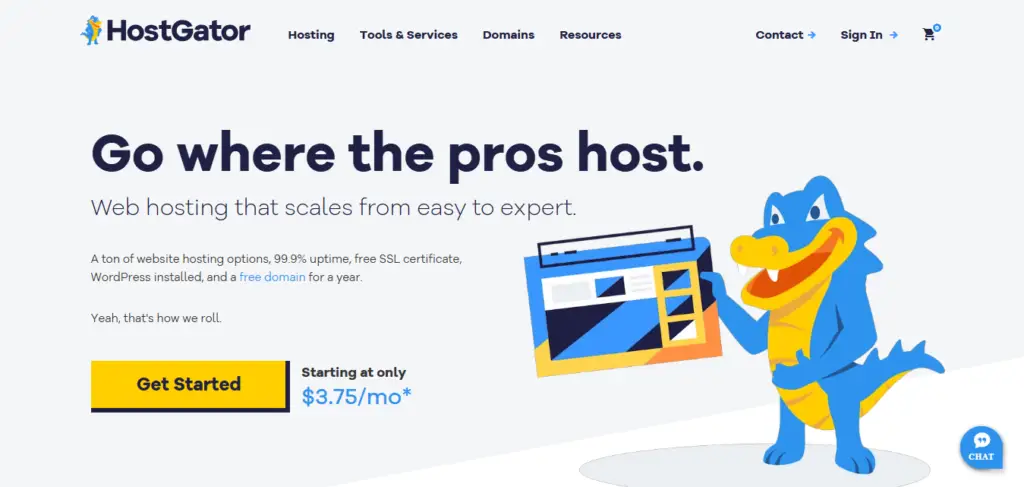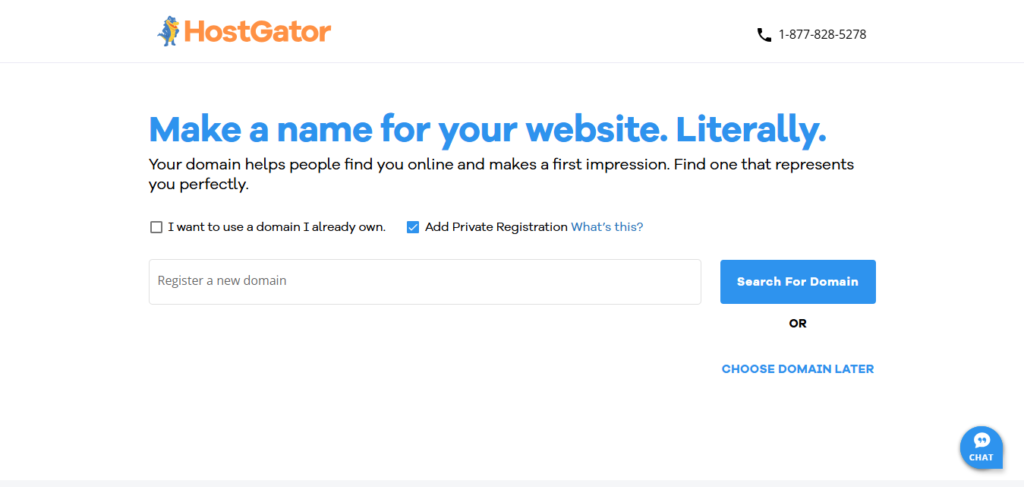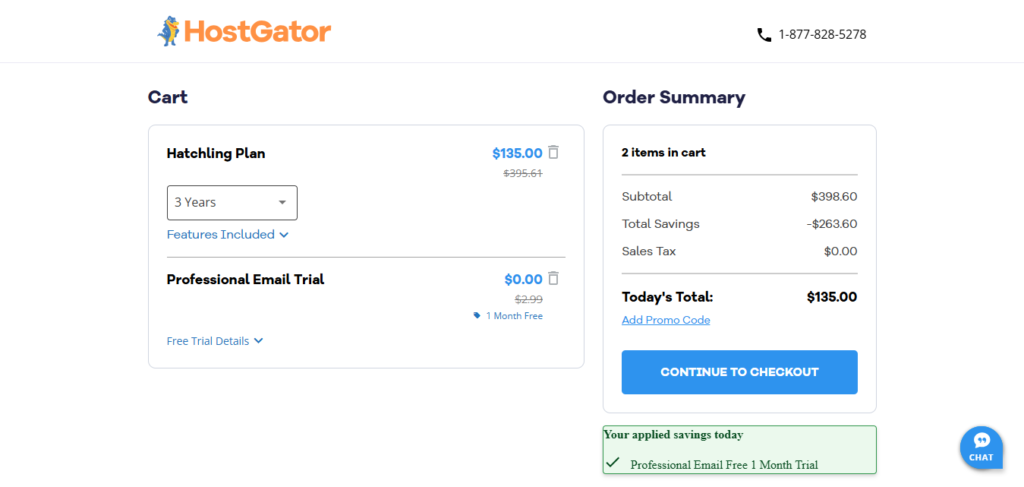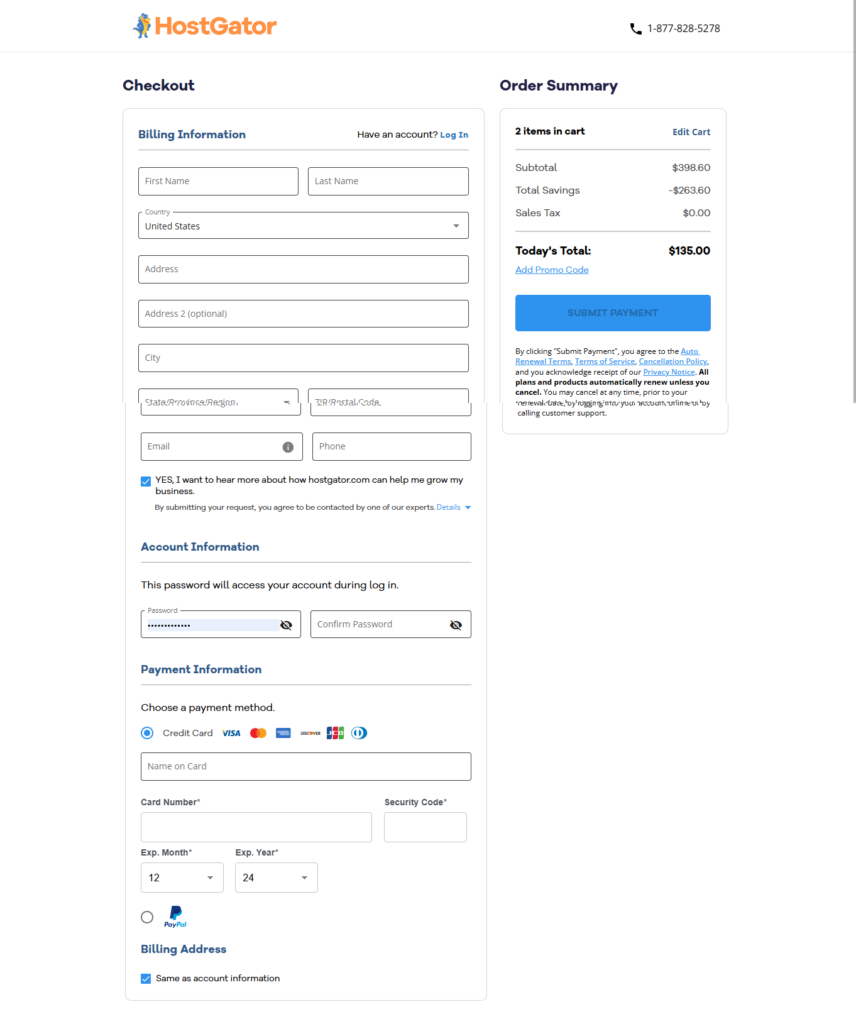
Tech blogging is one of the most profitable blogging niches online—if you do it right, you can make thousands of dollars, like many blog income reports suggest. Whether you love reviewing tech gadgets, covering AI news, or teaching coding, a tech blog can turn your interest in tech-related topics into a full-time passive income through ads, affiliate marketing, sponsorships, and many other ways bloggers use to make money online.
What is Tech Blogging?
A tech blog covers topics like:
✔ Gadget reviews (phones, laptops, gaming gear)
✔ Software tutorials (how to use ChatGPT, Python coding)
✔ Tech news & trends (AI, cybersecurity, startups)
✔ Buying guides (“Best Budget Laptops for Students”)
Beginner’s Tip: If you don’t already know, which I think most people do: A blog is a website mainly used for publishing blog posts or web articles online that are visible in Google search results or anywhere their link is shared.
How to Start a Tech Blog (Fast & Easy)
- Pick a Sub-Niche (e.g., “Smart Home Tech” or “PC Building”)
- Choose a Domain & Hosting (Use HostGator for a cheap & easy start)
- Set up WordPress within your HostGator account (WordPress is free, highly customizable, SEO & beginner-friendly)
- Write High-Quality Posts (Solve problems, answer questions)
- Drive Traffic (SEO + Social Media Promotions (Pinterest/Reddit, etc.))
How to Monetize and Make Money ASAP
All free and easy to do;
💰 Google AdSense ($500 − $2k/month with 10k+ visitors or less)
💰 Amazon Associates (Earn 4-10% on gadget sales)
💰 Sponsorships ($500 − $5k per sponsored post)
💰 Digital Products (Sell eBooks, courses, or printables) ($100 – $1,000 per product)
You don’t need to be an expert—just start, stay consistent, and monetize smartly and your revenue will grow over time. Ready to launch? Let’s dive in! 🚀
What You’ll Get Out of This Guide
By the time you finish this guide, you will:
- ✅ Have Your Own Tech Blog – Fully set up and ready to publish your first post.
- ✅ Know What to Write About – No second-guessing; you’ll have a list of tech-related topics to cover.
- ✅ Understand How to Make Money – Learn the exact steps to monetize your blog from day one.
- ✅ Attract Your First Readers – Know exactly how to promote your blog and grow your audience and income over time.
Starting a tech blog isn’t just about writing, it’s about building an online business that generates income through your knowledge of technology.
Let’s get you started! 🚀
What You Need to Start a Tech Blog
Here are the essential tools and resources you need to launch a successful tech blog that can make you money:
- A Computer – A laptop or desktop is necessary for writing blog posts, managing your website, and customizing your layout.
- A Domain Name – Your domain is your website’s address (e.g., yourtechblog.com). Choose something brandable, easy to remember, and related to technology.
- A Blogging Platform – WordPress.org is the best option for starting a tech blog. It’s user-friendly, flexible, and supports various monetization methods.
- Web Hosting – Web hosting is where your blog’s files are stored and made accessible online. I recommend HostGator, as it’s beginner-friendly and offers seamless WordPress installation.
Note: If you are wondering why not go directly to WordPress to get started, it doesn’t work that way; you need a web hosting provider to activate WordPress. Once you sign up for HostGator, you will have easy access to WordPress within your HostGator account.
How To Start A Tech Blog That Makes Money In 9 Steps
In this illustration, I’ll be using HostGator since they are one of the best web hosting providers for both beginners and experienced webmasters.
How to quickly start your tech blog in minutes.
- Step 1: Start Within A Tech Sub-niche
- Step 2: Click On HostGator To Get Started
- Step 3: Choose Your Preferred Hosting Plan
- Step 4: Claim a Unique Domain Name of Your Choice
- Step 6: Simply Select Your HostGator Hosting Subscription Period
- Step 6: Create Your HostGator Account
- Step 7: Install WordPress Within Your HostGator Account
- Step 8: Choose A Theme for Your Blog Theme [A Pre-built Site]
- Step 9: Customize Your Main Pages And Start Publishing Blog Posts.
Step 1: Start Within A Tech Sub-niche
Starting with a specific tech sub-niche is the best way to launch your blog successfully. Instead of covering everything in tech, focus on one main category first.
This will help you to:
✅ Build expertise and credibility in a focused area
✅ Attract a dedicated audience interested in that topic
✅ Rank better on search engines by targeting specific keywords
✅ Avoid feeling overwhelmed by too many topics
Once your blog gains traction, you can gradually expand into other tech sub-niches to discover more content ideas and reach a broader audience.
Here are some tech blogging sub-niches you can decide to start from;
1️⃣ Gadget & Tech Reviews
What is it about?
This sub-niche focuses on reviewing the latest gadgets, electronics, and software. If you love testing new products and giving recommendations, this could be a great niche. Tech enthusiasts, shoppers, and professionals rely on reviews before making a purchase.
📌 Examples of Blog Post Topics:
- 🔹 Best Laptops for Programmers in 2025
- 🔹 iPhone vs. Android: Which One Should You Buy?
- 🔹 Top 10 Must-Have Smart Home Devices
- 🔹 The Best Budget Gaming Headphones
- 🔹 5 Things to Consider Before Buying a Smartwatch
2️⃣ AI & Machine Learning
What is it about?
Artificial intelligence (AI) and machine learning (ML) are rapidly transforming industries. This sub-niche focuses on AI innovations, tools, and how they impact different fields. If you’re passionate about cutting-edge technology and its future potential, this is a great choice.
📌 Examples of Blog Post Topics:
- 🔹 How AI is Changing Everyday Life
- 🔹 Top 5 AI Tools for Content Creators
- 🔹 Is ChatGPT Replacing Human Writers?
- 🔹 AI in Healthcare: How Robots Are Assisting Doctors
- 🔹 The Future of AI-Powered Virtual Assistants
3️⃣ Cybersecurity & Privacy
What is it about?
With the rise in cyber threats, people are more concerned about online security than ever. A cybersecurity blog helps users understand how to protect their data, avoid scams, and stay safe online. If you’re interested in ethical hacking, data protection, or online privacy, this could be your niche.
📌 Examples of Blog Post Topics:
- 🔹 How to Keep Your Personal Data Safe Online
- 🔹 Best VPNs for Secure Browsing in 2025
- 🔹 Why You Should Use Two-Factor Authentication
- 🔹 How to Identify and Avoid Phishing Scams
- 🔹 The Dangers of Public Wi-Fi: How Hackers Steal Your Data
4️⃣ Software & App Development
What is it about?
This sub-niche is perfect for programmers and developers who want to share coding tutorials, app-building guides, and software-related insights. If you enjoy coding and want to teach others, a blog on software development could be an excellent fit.
📌 Examples of Blog Post Topics:
- 🔹 How to Build Your First Mobile App
- 🔹 Python vs. JavaScript: Which One Should You Learn?
- 🔹 Best Free Tools for Web Developers
- 🔹 How to Fix Common WordPress Errors
- 🔹 A Beginner’s Guide to Creating an E-commerce Website
5️⃣ Tech News & Trends
What is it about?
Tech is always evolving, and people love staying updated on the latest gadgets, software, AI advancements, and industry news. A tech news blog covers major announcements, new product launches, and emerging trends.
📌 Examples of Blog Post Topics:
- 🔹 The Future of Smart Homes: What to Expect
- 🔹 Is Cryptocurrency Still a Good Investment?
- 🔹 Latest Breakthroughs in Quantum Computing
- 🔹 What’s New in the World of Electric Cars?
- 🔹 The Impact of 5G on Mobile Devices
6️⃣ Gaming & eSports
What is it about?
Gaming is a massive industry with millions of dedicated fans. A blog in this sub-niche can cover game reviews, gaming hardware, streaming guides, or eSports tournaments. If you are interested in video games and want to create content around them, this could be your perfect niche.
📌 Examples of Blog Post Topics:
- 🔹 Best Gaming Laptops Under $1,000
- 🔹 How to Start a Career in eSports
- 🔹 The Evolution of Virtual Reality Gaming
- 🔹 Best Streaming Equipment for Gamers
- 🔹 A Beginner’s Guide to Making Money as a Twitch Streamer
7️⃣ Tech for Beginners
What is it about?
Many people struggle with basic tech skills, such as setting up a website, troubleshooting software, or using new apps. This sub-niche focuses on teaching non-techies how to use technology in simple steps.
📌 Examples of Blog Post Topics:
- 🔹 How to Set Up a Website in 10 Minutes
- 🔹 Best Free Software for Remote Work
- 🔹 Easy Tech Hacks Everyone Should Know
- 🔹 How to Speed Up a Slow Computer
- 🔹 A Beginner’s Guide to Using a VPN
Which Tech Sub-Niche Should You Choose?
The best tech blog sub-niche for you depends on your interests, expertise, and the audience you want to target.
Here are some quick tips to help you decide:
✅ Love gadgets? → Start a Gadget & Tech Review Blog
✅ Interested in AI? → Focus on AI & Machine Learning
✅ Passionate about online security? → Go for Cybersecurity & Privacy
✅ Know how to code? → Start a Software & App Development Blog
✅ Enjoy following tech news? → Cover Tech News & Trends
✅ Interested in gaming? → Write about Gaming & eSports
✅ Want to help beginners? → Teach Tech for Beginners
🚀 Once you choose your niche, follow the step-by-step guide above to launch your tech blog today!
Relevant Post – Here are other blogging niche sub-niche if you entirely want a different niche outside tech blogging.
Follow The Steps Below To Get Going!
Step 2: Click On “HostGator” To Get Started
When you’ve decided on which tech sub-niche to go into. You can use our HostGator discount link to get cheaper hosting prices, you’ll get a free domain name of your choice, which you would normally pay for using other web hosting providers.
While HostGator is solid and a beginner-friendly option, many big tech blogs use Cloudways for its scalability, SiteGround for its speed, and Kinsta for premium performance. If you expect to generate high traffic, WP Engine is another excellent choice. But for beginners looking for a little budget, but friendly hosting, Hostgator is a good choice, and you can always switch your web hosting or upgrade to a higher plan when your site that making money or receiving lots of visitors.
⚡ Fast hosting means a better experience for your tech-savvy audience!

Step 3: “Choose Your Preferred HostGator Plan”
Choosing the Hatchling plan on HostGator is the most affordable and best options for beginners. As you can always upgrade your hosting plan at any time or even entirely change hosting our web hosting provider while your blog site on WordPress is still intact.

Step 4: Choose a Unique Domain Name
After you select your plan, you’ll be guided to a simple page to claim your domain and complete the setup!

What to Consider When Choosing a Domain Name for Your Tech Blog
- ✅ Make It Memorable and Easy to Spell – Choose a name that’s simple, clear, and easy to type. Avoid numbers, hyphens, or complex spellings that might confuse visitors.
- ✅ Reflect Your Tech Niche – Your domain name should instantly tell people what your blog is about. If you’re focusing on gadgets, cybersecurity, or AI, consider including relevant tech-related words. Example: GadgetGuru.com, AIInsider.com, CyberShieldBlog.com.
- ✅ Keep It Short and Simple – A short domain (6-14 characters) is easier to remember and type. Avoid long, complicated names that people might forget.
- ✅ Make It Easy to Read and Pronounce – Avoid words that are hard to spell or combinations of letters that look confusing (like TechXtrmly instead of TechExtreme). If you can say it out loud easily, it’s a good choice!
Relevant Resource – 120+ Unique Domain Name Ideas For A Tech Blog
Step 5: Select Your HostGator Hosting Subscription Period
Verify that you’re on the Hatchling plan on the left and adjust your subscription to a 1-year or 36-month period, depending on your budget.

Step 6: Create Your HostGator Account
Register for HostGator by filling in your personal details and picking a strong password.

Step 7: Within Your HostGator Account, “Install WordPress”
Steps to Follow:
- Click to create your WordPress account, and you’ll be logged in immediately to begin setting up your blog.
- Complete your HostGator sign-up, then follow the on-screen steps to finish installing WordPress.
- Alternatively, log in to your HostGator account and go to the “Websites” or “WordPress” section.
Step 8: Choose a Theme for Your Tech Blog
Themes are pre-designed website templates that you can pick, preview, and customize for your tech blog. Here’s how to choose the best one:
- Go to Themes:
- In your WordPress dashboard, hover over “Appearance” on the left sidebar and click “Themes.”
- Browse the Theme Library:
- You’ll find a mix of free and paid themes. Use the search bar to search for keywords like “tech blog” or explore themes with popular features like “responsive” or “grid layout.”
- Filter Your Options:
- Use filters on the left to narrow down your choices. For a tech blog, look for themes with:
- Features: Post formats (galleries, videos), image sliders, social media links, and easy customization.
- Layout: Clean, modern designs with grid layouts that showcase tech product reviews and a mobile-friendly design.
- Use filters on the left to narrow down your choices. For a tech blog, look for themes with:
- Preview the Theme:
- Once you find a theme you like, hover over it and click “Preview.” This shows you a live demo of the theme so you can see how it looks in action.
- Check Reviews & Ratings:
- Read reviews from other users. This helps you understand the theme’s ease of use, customization options, and support.
- Make Sure It’s Mobile-Friendly:
- Ensure the theme looks good on mobile devices. Since many visitors will view your blog on phones, check how the theme looks on mobile during the preview.
- Consider Paid Themes (Optional):
- If you can’t find what you like in free themes, you can try premium themes with more features. However, if you’re a beginner, it’s usually best to start with a free theme until you get comfortable with WordPress.
Step 9: Customize Your Blog and Set Up Your Pages
Now you can customize your blog to look more like a real estate blog with a polished look that attracts clients and builds authority:
- Create Instant Credibility
- Use professional blues/grays (or local market colors)
- Add high-res hero images of luxury properties
- Install an IDX plugin for live MLS feeds (if representing properties)
- Must-Have Pages for Real Estate Blogs
- About Page: “Why Trust My Market Insights” (showcase credentials)
- Neighborhood Guides: “Where to Invest in [City]” (SEO goldmine)
- Free Valuation Tool: “What’s Your Home Worth?” (lead generator)
- Publish Your First High-Value Post
Start with these proven formats:- “2025 [City] Housing Market Predictions”
- “First-Time Buyer Mistakes to Avoid”
- “Luxury Home Tour: Inside [Famous Local Property]”
🏡 Pro Tools to Install Now:
- Realtyna (MLS integration)
- Estatik (property listings)
- Maps Marker Pro (interactive area maps)
Your Blog is Now Live on the Web! Your blog can:
- Customize your blog pages to generate seller/buyer leads (24/7)
- Establish youself as an expert within your niche by publishing useful blog posts
- Earn commissions through display ads and affiliate programs (mortgage lenders, home services)
Your First 7-Day Action Plan:
- Customize your site main pages [home, about, contact, etc]
- Publish 5 pillar posts (market trends + neighborhood spotlights)
- Set up Google AdSense
- Start promoting your blog
Normally you will learn as you grow and get to implement better blogging strategies to effectively grow your audience and make more money.
Find Profitable Tech Blog Post Ideas That Will Make You Money
Now that your tech blog is set up, it’s time to publish content that attracts traffic, engages readers, and makes money.
Below, we’ll break down high-converting blog post ideas into two key categories:
- Traffic & Ad-Friendly Posts (Drive visitors for quick ad revenue)
- Affiliate & Conversion Posts (Direct earnings from product recommendations)
Plus, we’ll include tools and strategies to maximize your monetization.
1. Traffic & Ad-Friendly Tech Blog Posts
These posts attract massive traffic, making them perfect for display ads (Google AdSense, Mediavine, Ezoic).
📈 Trending & Viral Tech Topics
- “The Biggest Tech Fails of 2025 (So Far)” (Great for social shares)
- “Is [New Gadget] Worth the Hype? (Early Review)” (Rank fast for new tech)
- “AI Tools That Are Replacing Jobs Right Now” (Controversial = high engagement)
SEO Tip: Use Google Trends (the best blog keyword research tool) to find rising searches.
🛠️ How-To Guides & Tutorials
- “How to Build a Gaming PC Under $1,000 (Step-by-Step)” (Long-form = ad-friendly)
- “How to Speed Up Your Old Laptop in 10 Minutes” (Beginner-friendly = high traffic)
- “How to Use ChatGPT for Coding (With Examples)” (AI = evergreen traffic)
Pro Tip: Structure posts with clear headings (learn how to format your blog posts for readability).
🔍 Comparison & List Posts
- “Windows vs. Mac for Programmers (2025 Update)” (Debates = high comments)
- “10 Must-Have Chrome Extensions for Productivity” (Easy to update yearly)
- “Free vs. Paid VPNs: Which Should You Trust?” (Security = high engagement)
Need more ideas? Check our 300+ tech blog post topic ideas.
2. Affiliate & Conversion-Focused Posts
These posts directly earn commissions from tech product recommendations.
💰 Best Tech Product Roundups
- “Best Laptops for Developers in 2025 (Tested & Ranked)” (Amazon/Newegg affiliate links)
- “Top 5 Noise-Canceling Headphones for Remote Work” (CableMogul, BestBuy affiliates)
- “Best Budget Smartwatches Under $200” (High conversion potential)
Pro Tip: Use Semrush (best SEO keyword research tool) to find buyer-intent keywords like “best [product] for [use case].”
🤖 AI & Software Tool Reviews
- “Notion AI vs. ClickUp: Which is Better for Productivity?” (Software affiliate links)
- “Is Jasper Worth It? (Honest 2025 Review)” (Direct SaaS affiliate commissions)
- “Best AI Coding Assistants (Free & Paid)” (GitHub Copilot affiliate links)
Monetization Hack: Add a “Quick Comparison Table” (boosts conversions).
🛒 Deals & Discount Posts
- “Black Friday Tech Deals Live Now (Updated Hourly)” (Seasonal affiliate traffic spike)
- “Student Discounts on Laptops & Software (2025 List)” (Great for back-to-school)
Tip: Learn how to write an attractive blog post headlines that boost CTR on deals.
3. Repurposing & Updating Old Posts
Turn past content into traffic & revenue magnets:
- “2024 Update: Best Mechanical Keyboards for Gaming” (Refresh affiliate links)
- “New Alternatives: Best Free Photoshop Replacements” (Keeps posts relevant)
SEO Tool: Use SurferSEO (best AI content writing tool) to optimize old posts.
4. Content Calendar for Maximum Earnings
| Weekly Post Types | Monetization Strategy |
|---|---|
| 1 Viral/Trending Post | Ad revenue + social traffic |
| 1 How-To Guide | SEO traffic + ad impressions |
| 1 Affiliate Roundup | Direct commissions |
Free: [300+ Blog Post Ideas] (Includes affiliate-ready posts)
5. AI & Tools to Speed Up Writing
- ChatGPT → “Generate 10 blog titles about AI productivity tools.”
- Jasper → Helps draft review posts faster.
- Canva → Design tech comparison infographics.
Need Help Writing? Learn how to write blog posts step-by-step or how to hire a blog writer for scaling.
6. Monetization Timeline for Tech Blogs
- 0-50 Posts: Focus on affiliate reviews + SEO (low traffic but high conversions).
- 50-100 Posts: Add display ads + sponsorships.
- 100+ Posts: Pitch brand deals + premium content.
Wondering how many blog posts you need to make money? We break it down here.
Final Tip: Publish Consistently
Aim for 2-3 posts/week (see how often you should publish blog posts for growth hacks).
How to Monetize Your Tech Blog Posts
The tech industry is one of the most profitable niches for blogging, with endless monetization opportunities. Whether you cover software reviews, gadget comparisons, AI developments, or coding tutorials, your expertise can lead you to generate significant stream of passive income through your blog.
Why Tech Blogs Make Money Easily
✔ High advertiser demand (tech companies have big marketing budgets)
✔ Premium affiliate commissions (SaaS and hardware offer 20-50% payouts)
✔ Recurring revenue potential (through memberships and digital products)
✔ Sponsorship opportunities (brands pay top dollar for tech reviews)
Tech audiences are valuable because:
- They’re early adopters who buy new products
- They research extensively before purchasing
- They engage with in-depth, technical content
Let’s break down the most effective ways to turn your tech blog into a revenue-generating machine.
1. Display Advertising: Passive Income from Tech Traffic
Why Tech Blogs Earn Premium Ad Rates
Tech is a high-CPM niche because:
- Gadget manufacturers pay premium rates
- Software companies aggressively advertise
- B2B tech services have large budgets
💰 Average RPMs (Revenue Per 1,000 Visitors):
- Google AdSense: $15 – $40 RPM
- Ezoic (10k+ visits): $25 – $60 RPM
- Mediavine (50K+ sessions): $40 – $80 RPM
- Raptive (100K+ pageviews): $60 – $120+ RPM
How to Maximize Ad Revenue
✅ Step 1: Start with Google AdSense
- Focus on “best X” posts (e.g., “Best Laptops for Programmers”)
- Ensure you have 15+ quality posts before applying
✅ Step 2: Optimize Ad Placements
- Top-performing ad locations:
- Below post titles (728×90 leaderboard)
- In-content ads after 2-3 paragraphs
- Sidebar sticky ads for affiliate promotions
✅ Step 3: Upgrade to Premium Networks
- Ezoic (uses AI to optimize ads)
- Mediavine/Raptive (highest payouts)
💡 Pro Tip: Tech comparison posts (“MacBook vs Surface”) get the highest-paying ads from competing brands.
2. Affiliate Marketing: Big Commissions from Tech Products
Why Tech Affiliate Programs Pay Exceptionally Well
- Software (SaaS): 20-50% recurring commissions
- Hardware: 5-15% on expensive items
- Digital tools: 30-70% on the first payment
Best Tech Affiliate Programs
✅ Hardware & Gadgets
- Amazon Associates (4-8% on electronics)
- Best Buy Affiliates (1-5% on tech)
- B&H Photo Video (up to 8%)
✅ Software & SaaS
- WP Engine ($200+ per signup)
- SEMrush/Ahrefs ($100+ per sale)
- Canva (20% recurring)
- Adobe Creative Cloud ($50+ per sale)
✅ Web Services
- Bluehost/SiteGround ($100+ per hosting signup)
- Cloudways ($50 per referral)
Tip: Tech-based Affiliate Programs to Monetize Your Blog
Types of affiliate posts that perform well are;
- “Best X for Y” guides (e.g., “Best Monitors for Coders”)
- Comparison posts (“Figma vs Adobe XD”)
- Deal posts (“Black Friday Tech Deals”)
- Tutorials (“How to Use [Tool]” with affiliate link)
Tip: Here are Some Affiliate-based Blog Post Very Monetizable
💰 Earnings Potential:
- Beginners: $500 – $3,000/month
- Established: $10K – $50K/month
💡 Pro Tip: Focus on high-ticket items (like $3,000 laptops) and recurring SaaS commissions for maximum earnings.
3. Sponsored Content & Paid Reviews
Tech companies actively seek bloggers for:
- Product reviews
- Sponsored tutorials
- Brand comparisons
💰 Sponsorship Rates:
- Small blogs (10K visits): $300 – $1,500/post
- Medium (50K+): $1,500 – $5,000
- Large (100K+): $5,000 – $20,000
✅ How to Get Sponsorships:
- Join tech influencer networks (e.g., Intellifluence)
- Add a “Work With Us” page
- Pitch brands directly
4. Digital Products (High Profit Margins)
🔹 Premium Content
- eBooks (“The Ultimate Python Guide”)
- Courses (“Master Web Development”)
🔹 Tools & Templates
- WordPress plugins/themes
- Notion templates for techies
💰 For Example, a single $200 coding course can generate $10K+/month with 50 sales. This is very possible with a very few conversions from thousands of steady visitors coming to your blog through Google search results.
Action Plan to Start Earning
- Apply to AdSense (start monetizing)
- Join 3 affiliate programs (Amazon, WP Engine, SEMrush)
- Pitch 5 tech brands for sponsorships
- Create one digital product (eBook or template)
🔗 For inspiration, see successful tech blog income reports.
Tip: Other Ways to Mmonetize Your Tech Blog and Make Money
How to Promote Your Blog Post to Increase Traffic (SEO & Social Media Focus)
Now that you’ve set up your tech blog, crafted great content, and explored monetization strategies, the next crucial step is promoting your blog posts to drive traffic. Without promotion, even the best content can go unnoticed.
While there are many ways to promote a blog, SEO (Search Engine Optimization) and social media marketing are the two most effective organic methods to attract consistent, long-term traffic. Paid ads can help, but if you want sustainable growth, mastering SEO and social media is non-negotiable.
Let’s break down how to use these strategies effectively, with a focus on applying them to a tech blog as an example.
1. SEO: The Best Long-Term Traffic Source
SEO helps your blog rank higher on Google, bringing free, consistent traffic over time. Here’s how to optimize your fashion blog for SEO:
A. Keyword Research & Optimization
- Use keyword research tools (Google Keyword Planner, Ubersuggest, Ahrefs) to find what your audience is searching for.
- Example: For a fashion blog, target keywords like:
- “Best summer outfits 2025”
- “How to style oversized blazers”
- “Affordable sustainable fashion brands”
- Include keywords in:
- Title & URL
- First 100 words
- Subheadings (H2, H3)
- Image alt text
B. On-Page SEO
- Write long-form content (1,500+ words performs better).
- Use internal links to keep readers on your site (e.g., link to your post on “How to build a capsule wardrobe” when discussing minimalist fashion).
- Optimize blog post images (compress with TinyPNG, use descriptive file names like “black-leather-jacket-outfit-ideas.jpg”).
C. Off-Page SEO (Backlinks)
- Guest blogging on fashion sites (e.g., Vogue, Who What Wear, Harper’s Bazaar) helps build authority.
- Get backlinks by:
- Creating shareable infographics (e.g., “The Evolution of Denim Trends”)
- Writing expert roundups (ask influencers for quotes)
- Submitting to fashion directories & forums
🔗 Want more SEO tips? Check out our guide on How to Optimize Your Blog for SEO and the Best SEO Tools for Bloggers.
2. Social Media Promotion: Drive Instant Traffic
SEO takes time, but social media can bring immediate traffic. Here’s how to leverage it for a fashion blog:
A. Pinterest (Best for Fashion Blogs)
- Create eye-catching pins with Canva.
- Use keywords in pin descriptions (e.g., “Boho outfit ideas for summer travel”).
- Join group boards to expand reach.
B. Instagram & TikTok
- Post outfit reels & styling tips with trending sounds.
- Use relevant hashtags (#OOTD, #FashionTrends2025).
- Engage with fashion influencers for collaborations.
Tip: How to Promote Your Blog on Instagram
C. Facebook Groups & Twitter Threads
- Share blog posts in fashion-focused Facebook groups.
- Write Twitter threads breaking down fashion trends with a link to your blog.
🔗 Need more social media strategies? Read our post on How to Promote Your Blog on Social Media.
3. Bonus: Email Marketing (For Repeat Traffic)
- Offer a freebie (e.g., “10 Must-Have Wardrobe Essentials Checklist”) to grow your list.
- Send weekly newsletters with your latest posts.
🔗 Learn how to build an email list in our guide How to Build an Email List for Your Blog.
Final Thoughts
SEO and social media are the two pillars of organic blog growth. While SEO brings long-term traffic, social media drives quick engagement. Combine both for the best results.
🔗 Want more blogging strategies? Check out these posts:
- How to Get Traffic to Your Blog
- Is Blogging Dead? (Spoiler: No!)
- Common Blogging Mistakes to Avoid
- Best Blogging Strategies for Beginners
By implementing these tactics, your fashion blog (or any niche blog) will start attracting real, engaged readers—and eventually, revenue! 🚀
Next up: How to Track and Monitor Your Website Visitors to measure your growth!
How Much Money Do Tech Blogs Make?
Beginner Tech Blogs
- Income: $300 – $1,000 per month
- Traffic: 1,000 – 10,000 visitors per month
- Number of Posts: 20 – 50 posts
- Time to Reach: 6 months – 1 year
- Common Monetization Methods:
- Display ads (Google AdSense)
- Affiliate marketing (promoting tech products, software, gadgets)
- Sponsored posts (small tech brands)
Beginners often focus on building a content library, increasing traffic, and experimenting with affiliate sales.
Average Tech Blogs
- Income: $1,000 – $10,000 per month
- Traffic: 10,000 – 100,000 visitors per month
- Number of Posts: 50 – 200 posts
- Time to Reach: 1 – 2 years
- Common Monetization Methods:
- Affiliate marketing (tech products, gadgets, software)
- Display ads (higher-paying networks like Mediavine or AdThrive)
- Sponsored content (working with larger tech brands)
- Product reviews (sometimes paid or via affiliate commissions)
At this stage, tech blogs start to gain authority and build relationships with tech brands for better sponsorship deals.
Established Tech Blogs
- Income: $10,000 – $100,000+ per month
- Traffic: 100,000 – 1,000,000+ visitors per month
- Number of Posts: 200+ posts
- Average time to reach: 2 – 5+ years
- Common Monetization Methods:
- High-ticket affiliate marketing (premium tech gear, enterprise software)
- Direct ad sales or premium ad networks (Mediavine, AdThrive, or directly selling ad space to tech companies)
- Product sponsorships and long-term partnerships with tech brands
- Launching their own products (e.g., tech courses, software, or digital tools)
Note: These figures provide a general overview; actual earnings can vary based on different factors on a specific blog.
Tip: Real Examples of Blog Income Reports to Inspire Your Journey.
Examples of Successful Tech Bblogs to Inspire You
Below are some examples of successful tech blogs to learn from and follow.
[a]. Wccftech
Overview: Wccftech is a blog that focuses on technology, gaming, and hardware news. They cover a wide range of topics, from consumer electronics to PC components, and are known for their thorough reporting on the gaming and hardware industries.
Blog’s Insights
- Estimated Monthly Income: $30,000 – $50,000+
- Monthly Traffic: 2 million+ visitors
- Number of Published Posts: 7,000+
- Monetization Methods:
- Display advertising
- Affiliate marketing (tech products, PC hardware)
- Sponsored content
[b]. TechPP (Technology Personalized)
Overview: TechPP is a blog focused on technology news, gadget reviews, and how-to guides. It provides detailed insights into consumer electronics, apps, and the latest tech trends. The blog is known for its personalized, in-depth reviews and comparisons.
Blog’s Insights
- Estimated Monthly Income: $10,000 – $20,000+
- Monthly Traffic: 500,000+ visitors
- Number of Published Posts: 2,000+
- Monetization Methods:
- Affiliate marketing (tech products, software)
- Sponsored content
- Display advertising
- Direct partnerships with tech brands
[c]. MakeUseOf
Overview: MakeUseOf offers a wide array of tech tutorials, software guides, and gadget reviews. The blog specializes in helping users make better use of their tech devices and software, offering simple and practical solutions for common tech problems.
Blog’s Insights
- Estimated Monthly Income: $60,000 – $100,000+
- Monthly Traffic: 4 million+ visitors
- Number of Published Posts: 10,000+
- Monetization Methods:
- Affiliate marketing (gadgets, software)
- Sponsored posts
- Display advertising
Tip: Detailed Examples of Successful Tech Blogs to Inspire You
Simplified Summary
You’ve just unlocked the full roadmap to building a successful tech blog—from initial setup to consistent monetization. Here’s everything we’ve covered in this comprehensive guide:
✅ Foundations – How to choose your tech niche, register a domain, and set up WordPress hosting
✅ Content Strategy – High-value post ideas like product reviews, tutorials, and industry analysis
✅ Monetization – Multiple income streams including affiliate programs, sponsored content, and ad revenue
✅ Growth Tactics – SEO optimization, social media promotion, and audience-building techniques
Now, let’s quickly recap how to get started:
🚀 Quick-Start Checklist for Your Tech Blog
- Select Your Niche (e.g., AI tools, gaming hardware, or smartphone reviews)
- Sign up with HostGator and choose a hosting plan
- Register Your Domain (something memorable and tech-related)
- Install WordPress with one-click setup
- Pick a Tech-Focused Theme (optimized for reviews and tutorials)
- Create Essential Pages (About, Contact, Review Policy)
- Publish Your First Posts (focus on in-depth, helpful content)
What Comes Next?
• Build content around trending tech topics
• Apply for affiliate programs (Amazon Associates, tech-specific offers)
• Optimize for SEO to rank in search results
• Engage with tech communities on Reddit and Twitter
Your tech blogging journey starts today! With consistent effort, you could be monetizing your expertise within months.
Related Blog Posts: Other Blogging Niches to Explore
Tech & Digital Niche:
- How to Start a Real Estate Blog & Make Money
- How to Start a Product Review Blog
- How to Start a Tech Blog & Make Money
- How to Start a Gaming Blog
- How to Start a News Blog
- How to Start a Health and Wellness/Mental Health Blog
General Blogging & Monetization:
- How to Start a Profitable Blog (Including Hobby Blogs)
- How to Start a Finance Blog & Make Money
- How to Start a Product Review Blog
- How to Start a Lifestyle/Personal Blog
- How to Start a Fashion Blog
- How to Start a Relationship Blog & Make Money
- How to Start a Coaching Blog & Make Money
Specialized Niches:
- How to Start a Wine Blog
- How to Start a Disney Blog
- How to Start a Travel Blog
- How to Start a History Blog & Make Money
- How to Start an Outdoor Blog & Make Money
- How to Start a Home Decor DIY (Craft & Home DIY) Blog
Creative & Content-Focused Blogs:
- How to Start a Wedding Blog & Make Money
- How to Start a Photography Blog & Make Money
- How to Start a Beauty/Makeup/Skincare Blog
- How to Start a Food/Recipe/Baking Blog
- How to Start a Fitness Blog
- How to Start a Lifestyle Blog



